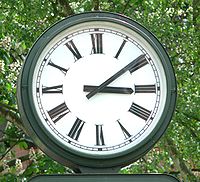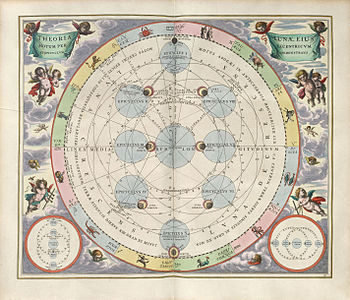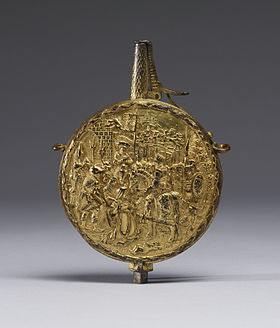Shortly before 8am on Sunday 7 December 1941, the first of two waves of Japanese aircraft launched a devastating attack on the US Pacific Fleet, moored at Pearl Harbor in Hawaii. The raid, which came with no warning and no declaration of war, destroyed four battleships and damaged four more in just two hours. It also destroyed 188 US aircraft. While 100 Japanese perished in the attack, more than 2,400 Americans were killed, with another 1,200 injured.
The causes of the attack on Pearl Harbor stemmed from intensifying Japanese-American rivalry in the Pacific. Japan’s imperial ambitions had been evident from as early as 1931, when she invaded Manchuria. The conquered region’s bountiful resources were then used to supply Japan’s war machine. Leaving the League of Nations in 1933, Japan pursued an aggressive foreign policy aimed at creating the ‘Greater East Asia Co-prosperity Sphere’, a euphemism for a Japanese empire modelled on European ones of the 19th century.
Japan became seen as a serious threat to the economic interests and influence of the US and European powers in Asia. By July 1937, with Japan engaged in all-out war with China, relations plunged to new lows. US President Roosevelt imposed economic sanctions, and Japan turned to the Axis powers, signing the Tripartite Pact with Germany and Italy in September 1940.
When Japan occupied French Indochina in July 1941, Roosevelt continued to avoid direct confrontation. But Japan’s imperial ambitions in the Pacific had placed her on a collision course with the United States, which controlled the Philippines and had extensive economic interests throughout the region. When the US imposed an oil embargo on Japan, threatening to suffocate her economy, Japan’s response was to risk everything on a massive pre-emptive strike which would knock the US out of the Pacific, clearing the way for a Japanese conquest of resource-rich South East Asia.
The Japanese achieved complete surprise at Pearl Harbor, something that can largely be attributed to failures in US intelligence. Although the US had cracked Japanese radio codes, in this case the raw data was not interpreted correctly by army and navy. Although the attack pummelled American battleships, US aircraft carriers escaped unscathed. This was critical because the Pacific Fleet would have been virtually incapable of operating without them.
The following day, the US declared war against Japan, where a shared sense of outrage and hatred had united the country’s bitterly divided media and public behind Roosevelt. On 11 December 1941, Germany and Italy declared war on the United States, thus bringing America into World War II.
Pearl Harbor appeared to be a huge success for Japan. It was followed by rapid Japanese conquests in Hong Kong, Singapore, Burma, the Philippines, Malaya and New Guinea. Yet in the long term, the attack was strategically catastrophic. The ‘sleeping giant’ had been awoken, and in America, a sense of fury now accompanied the mobilisation for war of the world’s most powerful economy. The losses at Pearl Habor would soon be more than made good, and used to take a terrible vengeance on Japan.
Singapore and Hong Kong
December 1941 was a black month for the Allies. Following the attack on Pearl Harbour on 7 December, the seemingly unstoppable Japanese steamed their way through the Pacific and South East Asia, attacking the islands of Wake and Guam, the Philippines, Malaysia, Thailand and Burma. For Britain, the most severe material, strategic and psychological blow came with the loss of two of the ‘jewels’ in its imperial crown: Hong Kong and Singapore.
Just eight hours after the bombing of Pearl Harbor, 52,000 Japanese troops attacked Hong Kong. British, Canadian and Indian forces, commanded by General Maltby and supported by the Hong Kong Volunteer Defence Force, were outnumbered three to one. On the first day of the battle, the Japanese wreaked destruction upon RAF aircraft, achieving immediate air supremacy. On 10 December, they breached the recently constructed defences of Gin Drinker’s Line, causing the evacuation of Kowloon and forcing Maltby’s forces to retreat onto Hong Kong Island. On Christmas Day, following a week of bombardment and fierce fighting, the beleaguered Allied forces surrendered. It was the first time in history that a British crown colony had surrendered to an invading force. It became known as ‘Black Christmas’.
Yet the worst blow to British imperial pride was still to come. Singapore, situated at the end of the Malayan Peninsula, was known as ‘the Gibraltar of the East’, and was a powerful symbol of British power in Asia.
When the Japanese arrived in February 1942, Singapore’s defenders were woefully underprepared. The head of the British Army in Malaysia, General Arthur Percival, had repeatedly delayed the reinforcement of Singapore’s defences. He was convinced that no army would be capable of crossing the dense jungle which protected the colony in the north. He also saw the construction of defences as dangerous to civilian and military morale. To make matters worse, the two biggest British warships in the Far East, Repulse and Prince of Wales, had been sunk by Japanese air attack on 10 December 1941, which destroyed any hope for the naval defence of Singapore.
In the ensuing battle, Japanese forces were commanded by General Tomuzuki Yamashita, who became known as the ‘Tiger of Malaysia’. His troops had essentially entered ‘by the back door’, crossing Thailand and moving down the east coast of Malaya. Japanese forces began landing on Singapore Island on 8 February. In some areas there was fierce resistance, but thanks to Japanese air cover, and the poor preparations and deployment of Commonwealth troops, the Japanese soon made critical inroads into the defences. General Percival surrendered the island’s garrison after 7 days of fighting. It was the largest surrender of British-led troops in history. 80,000 British, Australian and Indian soldiers became prisoners of war. The defenders lost 138,000 men in the battle; the invaders 10,000.
For Churchill, the fall of Singapore was the ‘worst disaster in British history’. In the mentality of the time, the easy defeat of the ‘white man’ by Asiatic forces represented a huge loss of face for the British. Many historians argue that the defeats fuelled the confidence and strength of the post-war anti-British movements. Both Hong Kong and Singapore were occupied by the Japanese until the end of the war.
Occupation and POWs
During the Second World War, Japan invaded and occupied vast swathes of territory in Southeast Asia and the Pacific. In some countries, the invaders established puppet governments. In China, invaded in 1937 but never fully conquered, the Japanese recruited Wang Ching Wei – a deserter from Chiang Kai-Shek’s army – to head the Nanking Government. Wang’s collaborationists had no real power. Treated with disdain by the Japanese, they were basically a tool to impose social control and curb the power of local warlords. In Burma, occupied from 1942, the Japanese capitalised upon anti-imperialist sentiment among the local population, granting nominal independence in 1943 and establishing a puppet government under Ba Maw. The Japanese also used captured Indian troops to form a National Indian Army commanded by Subhas Chandra Bose, which fought alongside the Japanese in the cause of Indian independence from Britain.
Other occupied territories were controlled by military governments and subject to martial law. Hong Kong was ruled by a military government under General Rensuke Isogai which controlled every area of political and public life. The Pacific island of Guam was also ruled directly by an army which ruthlessly imposed Japanese cultural practices upon the population. The Chamorros were forced to learn Japanese customs. Yen became the currency. People suspected of hiding friends or family members wanted by the authorities were harassed, beaten, tortured and executed.
These regimes were all characterised by a brutality that had become ingrained in the Japanese Imperial Army. The occupation of Hong Kong began with the bayoneting of wounded Allied soldiers in St. Stephen’s Hospital; it continued in the same bloody manner. Roughly 10,000 women were raped in the month following Japanese victory. The occupiers recruited former members of the Hong Kong Police to orchestrate public executions. In Indonesia, occupied in 1942, civilians were arbitrarily arrested, tortured and sexually abused. Thousands were interned in concentration camps or used as slave labour for Japanese military projects.
Prisoners of War taken by the Japanese originated from many different countries: China, India, Burma, Britain and the Commonwealth, the USA, the Netherlands and the Philippines. Japanese military culture did not subscribe to the idea of surrender; becoming a POW was to disgrace oneself and one’s country. Prisoners taken by the Japanese were brutally treated; the 1927 Geneva Convention was flagrantly ignored. The Red Cross was denied access to camps; beatings, executions, medical experiments, poor sanitation, starvation rations, disease and torture were part of everyday life. Prisoners such as Philip Meninsky visually chronicled their experiences using human hair, plant juice, blood and toilet rolls. Their work was later used as evidence at the Tokyo War Crimes Tribunal.
The Bataan Death March is one of the most infamous example of Japanese brutality towards POWs. Following the fall of Bataan in the Philippines, 75,000 American and Filipino prisoners were marched from the Bataan peninsula to prison camps; they suffered physical abuse, murder, torture and starvation. The construction of the Burma-Thailand Railway, a horrific slave labour project which killed around 90,000 Asian labourers and 16,000 Allied POWs (mainly through overwork, malnutrition and disease) is another. According to the figures of the Tokyo Tribunal, 27.1% of all western prisoners taken by the Japanese died; the Chinese figure is much higher. While just over 80,000 Western Allied POWS were released after the Japanese surrender, the Chinese figure was just 56. The Tribunal condemned the Japanese Prime Minister Tojo and six others to death for their responsibility for these crimes; sixteen more were sentenced to life imprisonment.
















